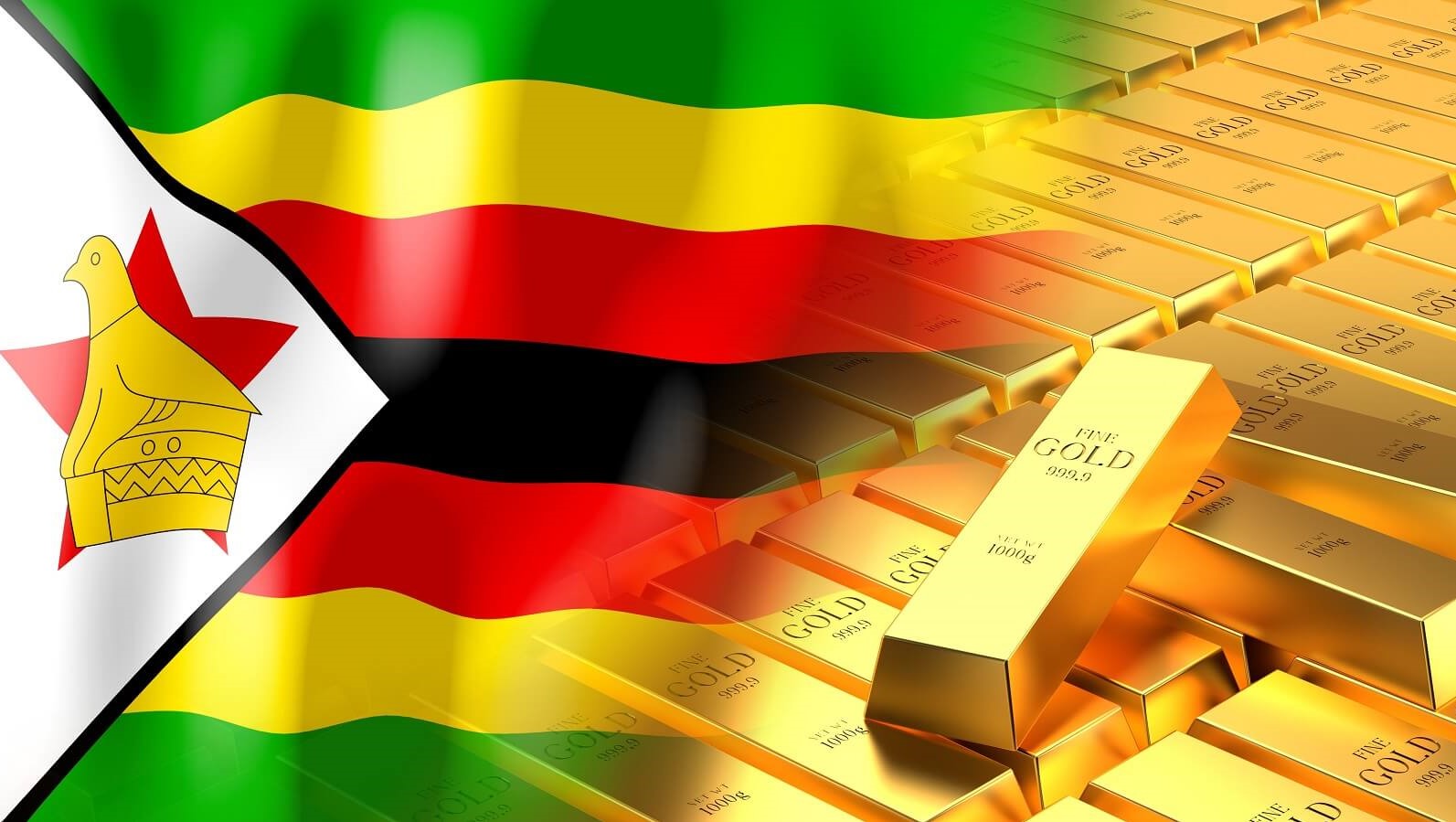
The Central Reserve Bank of Zimbabwe (RBZ) plans to introduce a gold-back digital currency, meant to be used as legal tender within the country.
The new currency will be used for transactions within the South African nation as part of its plans to stabilize the local currency, The Sunday Mail reported.
This way, the central bank would move towards anchoring the Zimbabwe Dollar with gold reserves, as the digital gold tokens represent gold held in physical form by the issuing authority.
The RBZ Governor John Mangudya was quoted as saying,
“We shall […] soon be introducing digital gold tokens to ensure that those with low amounts of local currency are able to purchase the gold units so that we leave no one and no place behind.”
The country uses the Zimbabwe Dollar and US Dollar.
The introduction of this digital gold token, per the reported plans, is meant to enable citizens who are holding small amounts of Zimbabwe Dollars to exchange it for the new token as a store of value and hedge against exchange rate volatility.
Mangudya told the news outlet that the current exchange rate volatility was caused by “expectations of increased foreign currency supply” on the market when the tobacco marketing season opened last month.
But there was a lower supply of foreign currency in the market than expected.
Therefore, he argued, “the movements in the parallel market rate” is expected to start stabilizing as tobacco farmers start getting their US Dollar payments in a matter of days.
The RBZ is also thinking of releasing more Mosi-oa-Tunya gold coins into the market as another response to the depreciation of the Zimbabwe Dollar.
Zimbabwe introduced Mosi-oa-Tunya coins last year as a response to excess liquidity and to stabilize the local dollar.
The new digital dollar tokens are seen as complementary to the Mosi-oa-Tunya gold coins, being an alternative vehicle for transactions and investment and a store of value.
Mangudya argued that foreign currency is viewed as a store of value in Zimbabwe, meaning that people want to switch from local to foreign currency.
Hence, he said,
“We are addressing this demand for store of value by increasing the number of gold coins in the market so that we manage that demand.”
According to Bloomberg, the local currency officially trades at ZWL 1,000.4 against USD 1 – but it changes hands at ZWL 1,750 on the streets of the capital, Harare.
The country abandoned its currency in 2009 and replaced it with the USD, following hyperinflation that made the local currency worthless.
The Zimbabwe dollar was then reintroduced a decade later, in 2019, with plans to revive the economy.
In 2020, however, the government authorized the use of foreign currencies as part of its response to the COVID-19 pandemic.
In 2022, it said that the multi-currency system would be maintained for a further five years.
In March this year, the government stated it would measure inflation using a weighted average of items priced in Zimbabwean Dollars and US Dollars, Reuters reported.
Lack of money is evident in a number of ways. The Wall Street Journal reported in March that businesses have started printing their own “money”, which is just pieces of paper, sometimes handwritten, that customers can use for future purchases – giving it out instead of change.
____
Learn more:
– Inflation Is Spiking in Zimbabwe (Again). Why High-Interest Rates Aren’t the Answer
– How Much Bitcoin Is Really Being Traded in Zimbabwe?
– Zimbabwe Eyes Crypto
– Blueberries for Bitcoin in Zimbabwe – Dr. Edwin Moyo
– How do cryptocurrencies differ?
– Different Categories of Cryptocurrencies
Read More: cryptonews.com









 Bitcoin
Bitcoin  Ethereum
Ethereum  Tether
Tether  XRP
XRP  Solana
Solana  USDC
USDC  Dogecoin
Dogecoin  Cardano
Cardano  TRON
TRON  Lido Staked Ether
Lido Staked Ether  Wrapped Bitcoin
Wrapped Bitcoin  Sui
Sui  Chainlink
Chainlink  Avalanche
Avalanche  Stellar
Stellar  LEO Token
LEO Token  Toncoin
Toncoin  Hedera
Hedera  Shiba Inu
Shiba Inu  USDS
USDS  Wrapped stETH
Wrapped stETH  Bitcoin Cash
Bitcoin Cash  Litecoin
Litecoin  Polkadot
Polkadot  Hyperliquid
Hyperliquid  Binance Bridged USDT (BNB Smart Chain)
Binance Bridged USDT (BNB Smart Chain)  Bitget Token
Bitget Token  WETH
WETH  Ethena USDe
Ethena USDe  Monero
Monero  Pi Network
Pi Network  WhiteBIT Coin
WhiteBIT Coin  Wrapped eETH
Wrapped eETH  Coinbase Wrapped BTC
Coinbase Wrapped BTC  Pepe
Pepe  Aptos
Aptos  Uniswap
Uniswap  Dai
Dai  Bittensor
Bittensor  OKB
OKB  NEAR Protocol
NEAR Protocol  Ondo
Ondo  Official Trump
Official Trump  Gate
Gate  Internet Computer
Internet Computer  sUSDS
sUSDS  BlackRock USD Institutional Digital Liquidity Fund
BlackRock USD Institutional Digital Liquidity Fund  Tokenize Xchange
Tokenize Xchange  Aave
Aave